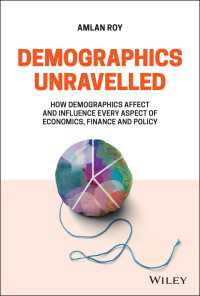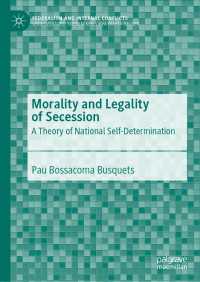Description
Seaports, as part of urban centers, play a major role in the cultural, social and economic life of the cities in which they are located, and through the links they provide to the outside world. Port-cities in Europe have faced significant change, first with the loss of heavy industry, emergence of Eastern European democracies, and the widening of the European Community (now European Union) during the second half of the twentieth century, and more recently through drivers to change including the global Sustainable Development Agenda and the European Union Circular Economy Agenda.
This book examines the role of modern seaports in Europe and consider how port-cities are responding to these major drivers for change. It discusses the broad issues facing European Sea Ports, including port life cycles, spatial planning, and societal integration. May 2019 saw the 200th anniversary of the first steam ship to cross the Atlantic between the US and England, and it is just over 60 years since the invention of the modern intermodal shipping container – both drivers of change in the maritime and ports industry. Increasing movements of people, e.g. through low cost cruises to port cities, can play a major role in changing the nature of such a city and impact on the lives of the people living there. This book brings together original research by both long-standing and younger scholars from multiple disciplines and builds upon the wider discourse about sea ports, port cities, and sustainability.
Table of Contents
Foreword by David Pinder.- Chapter 1. Introduction.- Chapter 2. Port-City redevelopment and Sustainable Development.- Chapter 3. A Life-Cycle Model for port redevelopment strategies.- Chapter 4. Port-City redevelopment and the Circular Economy agenda in Europe.- Chapter 5. Technological Change and Logistics Development in European Ports.- Chapter 6. European Spatial Planning and Port-Cities.- Chapter 7. Organisational Change Management in Seaports.- Chapter 8. Urban Regeneration and Spatial Restructuring of Ports in Cities.- Chapter 9.Policy and Planning Issues in European Waterfront areas.- Chapter 10. Touristification of European Port Cities: Impact on local populations and cultural heritage.- Chapter 11. Governance Structures in Port Cities.- Chapter 12. The Intermodal Centrality of European Port and non-Port Cities: An Appraisal.- Chapter 13. The separation of ports from cities: The Case of Rotterdam.- Chapter 14. Integrated Port Cities: The Case of Hamburg.- Chapter 15. The Societal Integration of Ports and Cities: Case Study on Spanish Ports.- Chapter 16. The Consolidation of Waterfronts as Places of Leisure: Evidence from the South Bank of the Tagus Estuary, Portugal.- Chapter 17. Analysis of Interpretative Frameworks and Decision-Making in Maritime Environmental Disasters.- Chapter 18. Sustainability Assessment of Seaports.- Chapter 19. Conclusions.









